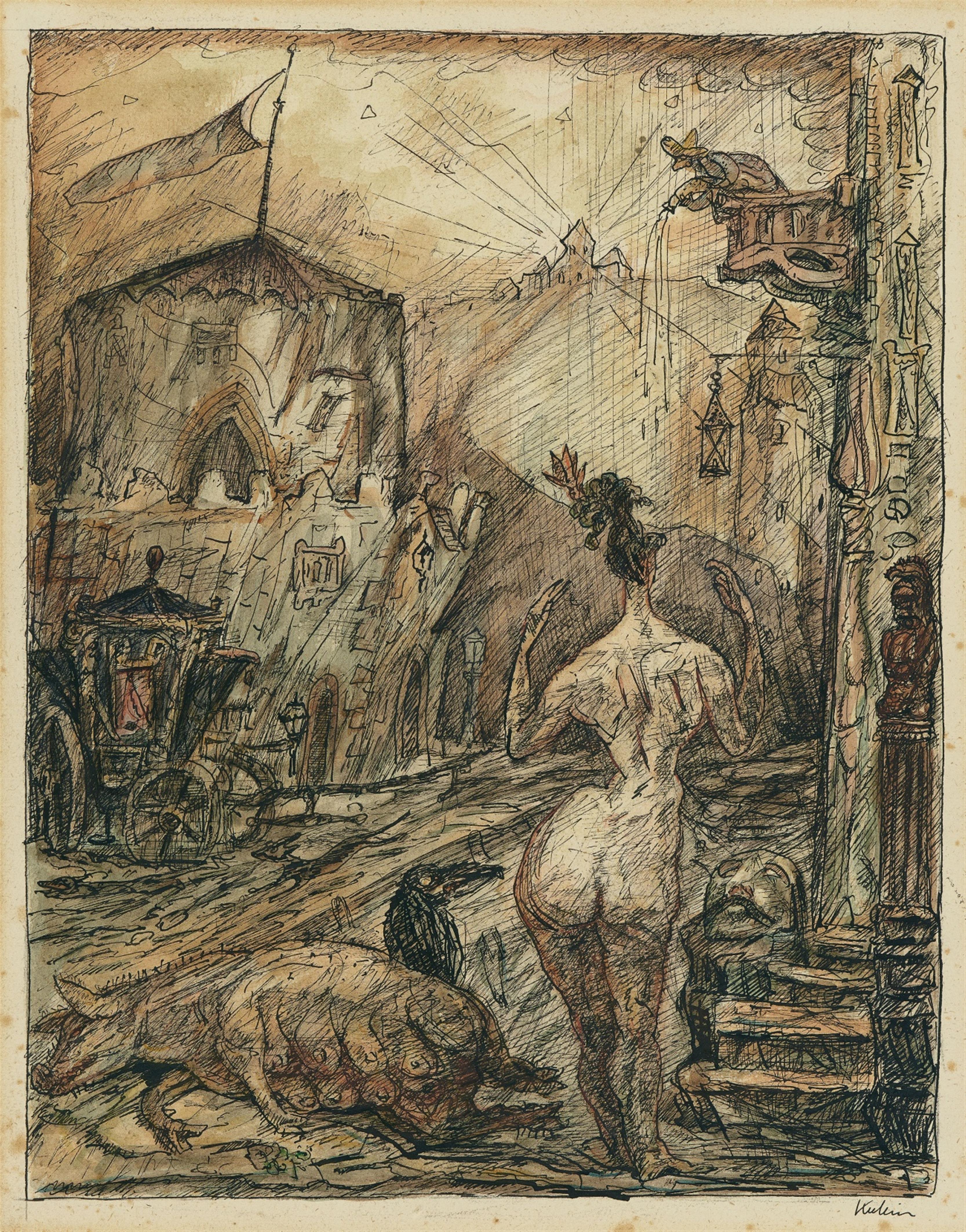Alfred Kubin
Aschermittwoch
Circa 1922
Watercolour and pen and ink drawing on laid paper (reverse side of a cadastral map) 39.5 x 31.6 cm Framed under glass. Signed 'Kubin' in India ink lower right, titled 'Aschermittwoch' lower left. - Marginal browning and with few foxmarks.
There is scarcely another artist of the modernist period who succeeds like Alfred Kubin in organically merging the social realities of everyday life with the most varied fictions and dream images. In a 1908 letter to his friend and fellow artist Fritz von Herzmanovsky-Orlando, Kubin refers to himself as “organiser of the uncertain, ambiguous, shadowy, dream-like” (Letter of 9 January 1908, in: Fritz von Herzmanovsky-Orlando, Sämtliche Werke vol. VII. Der Briefwechsel mit Alfred Kubin. 1903 bis 1952, Salzburg/Vienna 1983, p. 10) and his works do in fact reveal themselves to their viewers as an enigmatic amalgamation of the seen and the invisible.
In our ink drawing magnificently toned with watercolours, Ash Wednesday presents itself as something between the Apocalypse and Carnival, as a limbo for human beings and creatures. On the threshold between intoxication and passion, penance and salvation, Carnival is an obvious theme for the artist in many respects: after all, the festival serves as a symbol of transformation and, as the earthly dream (or nightmare) par excellence, it provides an ideal foil for Kubin to stage different levels of reality. What is striking is not just Kubin's very typical wealth of detail, which is able to make the individual elements of the picture and the depicted creatures culminate in an abundance of fantastic narratives, but also the graphic density. Kubin has masterfully placed his light and dark tones and used every single stroke to also underscore the obsessive explicitness of his subject on a formal level. In this quality and grandeur, this sheet - which also provided the source for a lithograph for the portfolio “Traumland II” (publ. by Fritz Gurlitt, Berlin 1922) - presents itself as a visually overpowering masterwork by one of the 20th century's most important draughtsmen.
Catalogue Raisonné
Hoberg Mappe V/II/2, and Raabe 168 (lithograph after this drawing)
Provenance
Private collection, Westphalia

